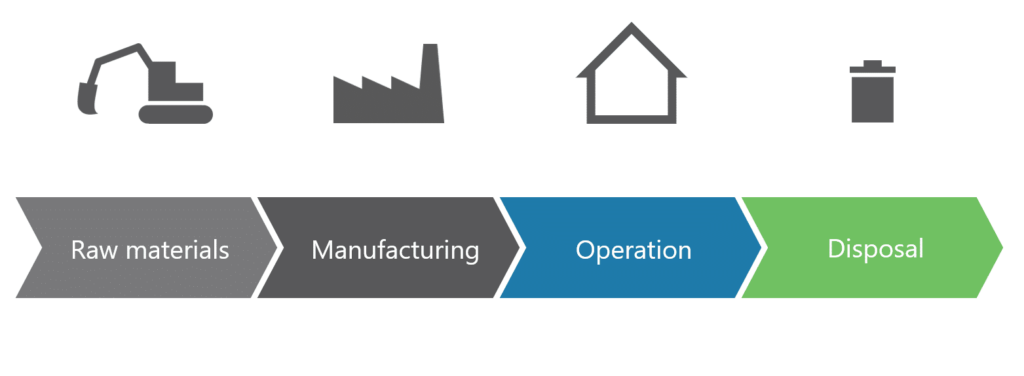At the Witchcliffe Ecovillage, we wanted to take sustainable building design to the next level. After enshrining the basics of passive solar design into our Sustainable Building Design Guidelines, we took the next step of examining the energy it took to create, transport to site, and dispose of various building common materials. We decided to use ‘life-cycle analysis’ (LCA) as a tool to help us decide which building materials were appropriate for the Ecovillage to help us reduce embodied energy in the buildings and thereby reduce overall carbon emissions. Our goal was to create a new housing estate that, when combined with the positive impacts of the solar panels, is entirely carbon negative.
In March 2019, we employed well-respected LCA researcher / consultant Andrew Moore of Lifecycle Logic to help us with this investigation. We designed a prototype house for a Cottage Lot, and Andrew analysed the embodied energy with a range of building materials. This allowed us to understand the individual impact of various construction materials, which assisted us in our recommendations and requirements in the Sustainable Building Design Guidelines. This analysis also allowed us to set a reasonable target for maximum carbon emissions for each house.
The second step in our process was to design an assessment tool that we could use to ensure that our designs (and custom homes designed by lot purchasers) were meeting our embodied energy targets. For this, we began working with eTool, a world leading LCA software developer based in Perth. Prior to this exercise, their software has been used for large commercial and apartment projects, but it is time-consuming, complicated, and expensive. Our version of eTool’s software needed to be inexpensive, quick to fill out, and still fairly accurate – and designed for the detached housing market.
After months of work with eTool, we are excited to announce the launch of Lifecycle.House, an online application developed as a pilot specifically for the Witchcliffe Ecovillage to measure the embodied energy in the proposed houses in the Ecovillage. While it is still being refined, early use and feedback has been very positive. On average it takes about 30 minutes to input data for a house, and it automatically generates a Certificate of Compliance to demonstrate that your house has met the intended outcome in reducing carbon emissions.
As far as we are aware, this is a world-first for any residential development. We are very excited to be using it at the Witchcliffe Ecovillage to certify our efforts; but even more so we are proud that our investment will now make this available to the broader housing and land development industry. Even if other developers set lower targets, the cumulative impact of this assessment process could have profound impacts on how new housing estates are designed, marketed, which construction materials are chosen, and eventually how materials are manufactured. This will hopefully then lead to considerable cumulative carbon emission reductions across the entire development industry.

